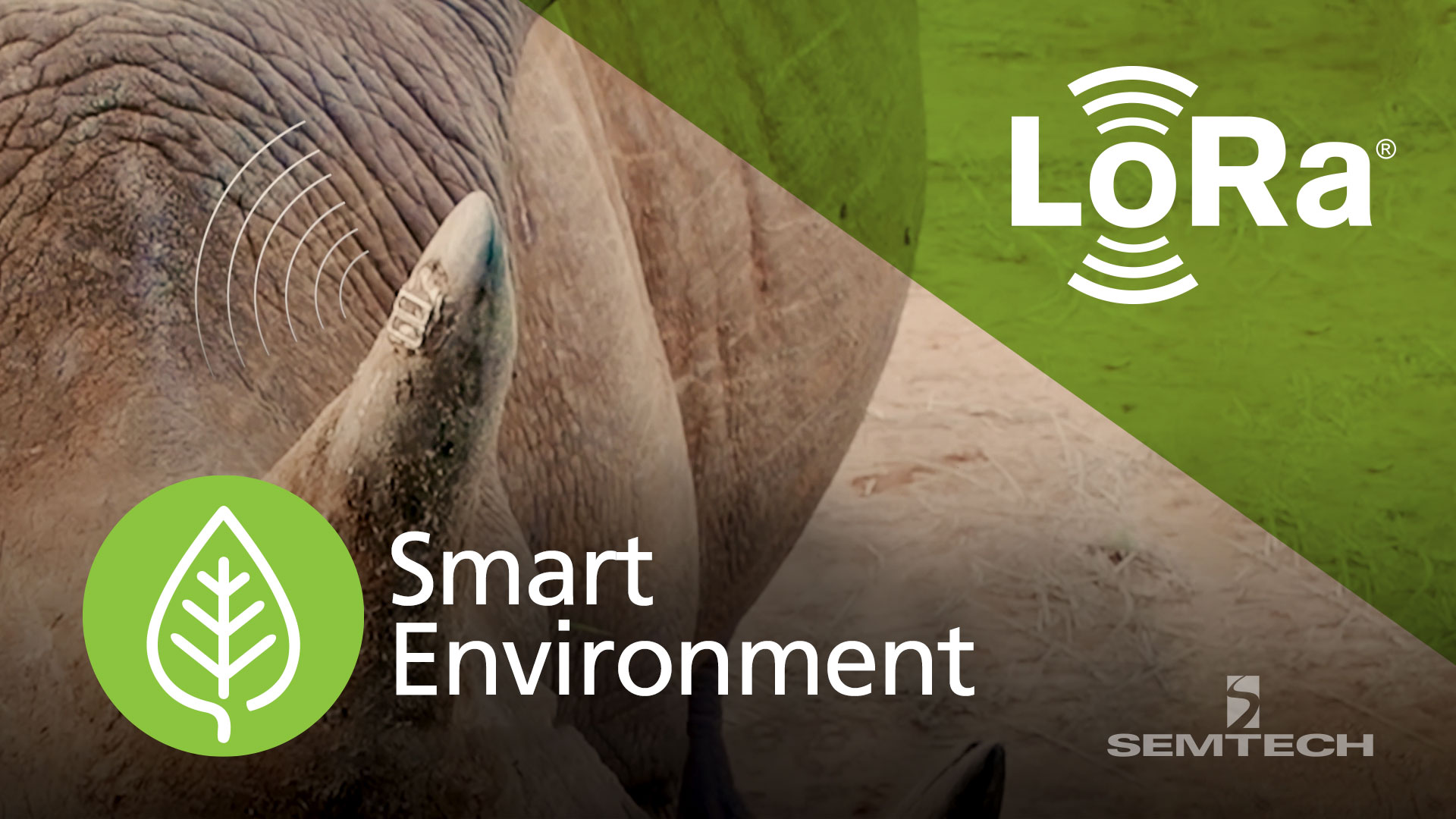Without a way to intelligently track endangered species, it is difficult for rangers to fend off poachers in many of Africa and Asia’s national parks. With Internet of Things (IoT) solutions, creating a sustainable and safe environment for animals and humans through technology is simple and efficient. Whether helping to monitor the whereabouts of animals living in the park or providing protection for humans that live in close proximity, wireless IoT solutions, such as those based on low-power wide-area networks (LPWAN), offer major potential for wildlife conservation efforts.
As most National Parks lack basic 3G or 4G Internet coverage, this poses a challenge for device connectivity over a wide area. The first step in deploying IoT solutions to these parks is to cover the conservation area with a reliable network suitable for low power sensors. These networks serve to collect data from sensors distributed throughout the expansive area. Once end devices are deployed and connected to the network, park rangers may leverage sensor data to securely track wildlife movement and monitor the park’s perimeter to prevent poaching. For Smart Parks, these efforts are possible with Semtech’s LoRa® devices and the LoRaWAN® protocol.

Taming the Wilderness with LoRaWAN
With the given challenges national parks face, Smart Parks, an innovative conservation company founded in 2013, put its efforts towards creating technology and tracking methods that protect endangered species, humans and the environment. With its goals in mind, Smart Parks chose LoRa devices to enable sensors that track wildlife and monitor park gates. The application provides real-time information about the location of wildlife and other factors affecting the park environment, via sensors deployed throughout the area. This process, called Situational Awareness, and plays a very important role in modern wildlife conservation.
Smart Parks chose LoRa devices and the LoRaWAN protocol because they offered the following features:
- The LoRaWAN protocol is the de facto standard for LPWAN, enabling consistent connectivity over 40 kilometers from a gateway
- LoRa-based solutions flexibly deploy with minimal additional infrastructure and immediately connect to the Cloud
- Battery and solar powered sensors remove the requirement for fixed power and enable battery lifetimes up to 10 years depending on the use case
- The LoRaWAN standard encrypts all communication, and has security fundamentally built into the specification making signals almost undetectable by poachers
Creating a LoRaWAN-based Wildlife Refuge
In 2017, Smart Parks successfully deployed geolocation sensors at Mkomazi National Park in Tanzania, covering over 2,000 square kilometers. Small sensors were implanted directly into the horns of endangered Black Rhinos. These rhino trackers show the location of the animals within the park, providing park rangers with actionable intelligence. LoRa-based sensors are also placed throughout the park, including in gates and fences. This allows park rangers to protect endangered species and people inside the sanctuary. Gate sensors report open or closed status, aiding security efforts to monitor those entering and exiting the park.
Similarly, in Assam, India, Smart Parks aimed to reduce the conflict between humans and elephants. With solar-powered LoRa-based sensors deployed into fences and the roofs of homes near the wildlife refuge, personnel are able to track elephant movement. These sensors not only monitor movement, but also trigger an alarm if elephants encroach into residential areas. LoRa-based alerts aid security and make the difference in keeping people, property and elephants safe.
Learn more about these applications in the video below.

Since the installment of LoRa-based devices, poaching of iconic species, such as the rhino and elephant, in monitored locations has dropped to zero. With over 55 gateways deployed and nearly 26 million square kilometers covered in countries including, India, Kenya, Malawi, Rwanda, South Africa, and Tanzania, LoRa devices and the LoRaWAN protocol prove Smart Parks’ goal of protecting animals and the environment is well within reach worldwide. At the time of publication, the organization is in the process of creating new Smart Parks in Gabon, Namibia and Zambia.
Subscribe to Semtech’s blog to stay up to date with the latest LoRa news and to get stories like these delivered to your inbox on a monthly basis.

Semtech®, the Semtech logo, LoRa®, and LoRaWAN® are registered trademarks or service marks of Semtech Corporation or its affiliates. Other product or service names mentioned herein may be the trademarks of their respective owners.



